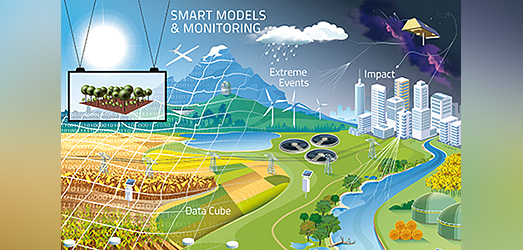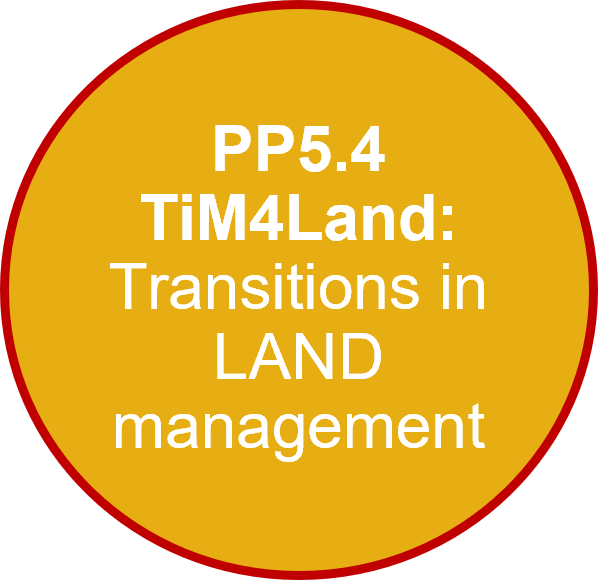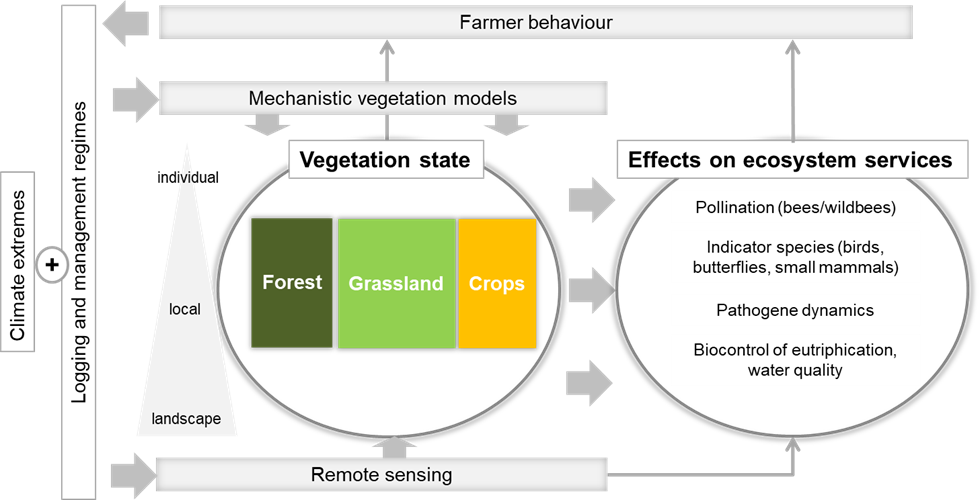

TiM4Land: Transitions in LAND management
Platform project - PP5.4
Assuring future landscape multifunctionality requires strategies to mitigate the climate crisis’ effects. Landscape management is one of the main drivers affecting ecosystem services. Hence, site-specific information on the spatially heterogeneous landscape management is crucial to develop mitigation strategies. To support this task, PP5.4 wants to provide improved products on land management practices, which are often masked by changing abiotic/biotic conditions, using remote sensing and terrestrial modelling. Consequently, options for climate adaptation in agriculture or forestry can be more robustly defined as well as their implications on various landscape functions.
The state, dynamics and functioning of land ecosystems are driven by anthropogenic management as well as climate change impacts and related disturbances. However, detailed information on land management is scarce which hinders to derive robust predictions of landscape dynamics especially in interactions with climate change. The purpose of this PP is to identify impacts of land management and climate change scenarios on the multifunctionality of landscapes by combining mechanistic vegetation modelling with remote sensing and ecosystem assessment models.
While remote sensing enables the classification of land use types and the estimation of its cover extent, landscape composition and the state of land vegetation, mechanistic vegetation modeling contributes an explicit consideration of different drivers of vegetation dynamics (i.e. logging or management regimes including their timing of action). Connecting management information from different backgrounds and ideally combining vegetation models with remote sensing will support large-scale applications of mechanistic vegetation models at high resolution to the German wide (or European) scale as well as the interpretation of remote signals for deriving further products (e.g. on land use intensity). By additionally integrating ecological assessment models, ecosystem services of managed land vegetation (in interaction with climate change) will be enabled to be estimated in scenarios at the local to the regional/landscape scale (feeding back to management decisions).

